The 13 Incredibly Helpful Octacosanol Benefits
Since Crenton][1] showed in 1949 that Octacosanol is a promising class of biologically active compounds with excellent benefits, a large number of researchers have been devoted to the extraction and preparation of the substance][2] and to the study and application of its physiological functions[3][4][5][6]][7].
At present, the Octacosanol Benefits mainly include enhancement of endurance and fatigue; promotion of metabolism; resistance to hypoxia; lowering of blood lipids and resistance to atherosclerosis; inhibition of hepatic oxidative metabolic disorders and acute hepatic damage; anti-inflammation; antitumor; improvement of sleep quality; treatment of Parkinson's disease; enhancement of skin blood circulation; and influence on the growth of animals and their reproductive functions, etc. Therefore, Octacosanol is a natural substance that can be used as an antimicrobial agent in a variety of ways, such as in the treatment of Parkinson's disease and in the treatment of other diseases, such as diabetes.
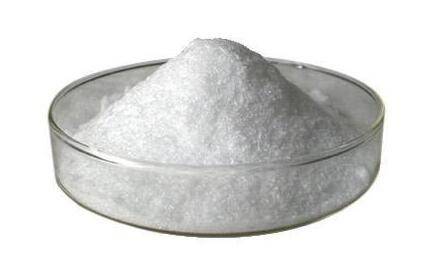
Therefore, as a kind of natural health additive, Octacosanol has been widely used in natural health products, medicines, sports drinks, cosmetics, and animal feeds, and its R&D and purification have been the focus of domestic and international research. Below are the 13 incredibly helpful octacosanol benefits for you.
What Are the Octacosanol Benefits?
Octacosanol has excellent biosafety. The LD50 value of octacosanol was found to reach 18 000 mg/kg in a toxicity study in mice administered by oral gavage, indicating that it has a high safety profile. A large number of researchers and scholars have devoted themselves to the study and application of the physiological functions of this substance [4].
1. Enhance Endurance, Anti-Fatigue, Anti-Hypoxia
Studies have shown that Octacosanol can enhance human endurance, quickly recover physical strength][8][9][10][11][12] and improve physiological indicators in body fluids after activities. Zhong Geng et al. [13] found that this substance can prolong the duration of weight-bearing swimming, increase the content of liver glycogen in body fluids, and significantly reduce the concentration of urea in the serum of mice after activity.
Yang Xiaoying et al. [14] found that it can effectively attenuate the effect of myocardial lipid peroxidation after overload exercise, and at the same time enhance the biological activity of the antioxidant enzyme SDT in rats to prevent myocardial damage, and the two synergistically improve the anti-fatigue ability of mice [15]. At the same time, Octacosanol can regulate the endocrine capacity of the myocardium of exercise fatigue rats, which can effectively protect the heart and enhance the endurance of mice [16]. Dong Yanguo et al [17] showed that Octacosanol has the effect of relieving fatigue in mice.
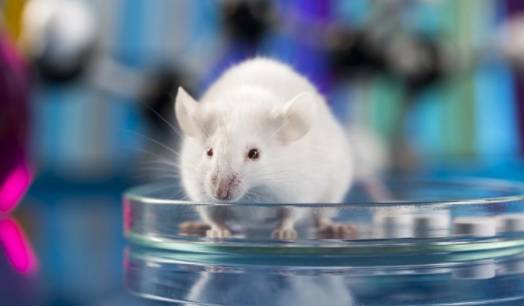
Octacosanol helps the body tolerate hypoxia and improves the body's ability to operate under high altitude conditions. Gao Yuqi et al. [18] tested the effect of eicosanoids on the operational capacity of the highland military by dividing 38 healthy males who had been stationed at the plateau of 3,700m for more than one year into experimental and control groups using a double-blind method and confirmed that eicosanoids can increase the oxygen reserve in the blood, thus improving the labor force of the human body.

They also observed the microstructure of the heart and brain tissues of the two groups of mice under hypoxic conditions and found that the edema of the heart and brain tissues of the mice fed with eicosanoids was far less than that of the control group. Dioctadecanol can protect the heart and brain tissues under hypoxia and is beneficial to maintain the normal function of the heart and brain tissues under confined hypoxic conditions [19].
2. Promoting Metabolism
Octacosanol has the benefit of promoting metabolism [20]. It has been found that it can not only accelerate the consumption of myoglycogen and fat metabolism in rats during exercise [21], but also effectively enhance the activities of cardiac muscle, PFK, NADH-Tr, succinate dehydrogenase (SDH) and ATPase in rats, and especially enhance the activity of ATPase [22], which suggests that it can accelerate energy consumption of cardiac muscle and skeletal muscle in mice. This suggests that the substance can accelerate the energy consumption of cardiac and skeletal muscles in mice. The intake of this substance significantly increased the secretion of adrenaline and glucagon in rats, as well as the expression of GS in the liver and muscle, which promoted glycogen metabolism in the body [23].
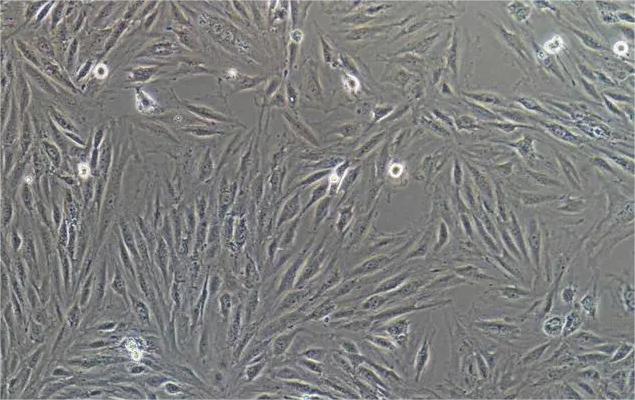
Beijing Sport University conducted a 35d weight loss test on 32 athletes taking Octacosanol, which was divided into low, medium and high dose groups and a control group, and the weight loss effect of the medium dose group being the most obvious, with an average weight loss of 2.45kg, fat loss of 2.27kg, and a 2.09% decrease in body fat percentage. The study also proved the effect of the substance on human leptin receptors and its good effect on weight loss and fat reduction.
3. Lowering Blood Lipids and Cholesterol
As early as 2006, Zhong Geng et al. proved that Octacosanol has the benefit of lowering blood lipids. Qi Xiaoming et al [24] suggested that the blood lipid-lowering effect of Octacosanol is related to the dosage, the higher dosage of the substance can significantly reduce the serum TG, TC, and LDL-C content, but has no significant effect on HDL-C; and the lower dosage of the substance only has an effect on the serum concentration of TC. Dev K. Singh et al [25] suggested that Octacosanol reduces serum cholesterol by activating the enzyme activity through phosphorylation of AMP-kinase, thus reducing HMG-CoA enzyme activity and controlling serum cholesterol synthesis.
Simonetta Oliaro-Bosso et al [26] synthesized eicosanoids and octadienols for regulating HMG-CoA enzyme. Simonetta Oliaro-Bosso et al [26] synthesized eicosanoids and eicosapentaenols to modulate HMG-CoA enzyme activity for serum cholesterol control, and Giuseppe Marazzi et al [27] developed a multivariate nutritional blend containing Octacosanol that significantly reduced cholesterolemia in elderly patients with high cholesterol levels and demonstrated a high degree of safety and tolerability. It has also been used in the treatment of children with high cholesterol to regulate their serum cholesterol levels [28].
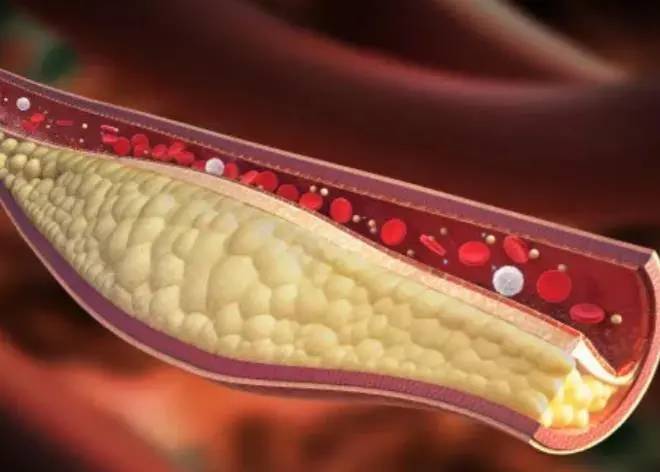
Many studies and clinical trials at home and abroad have proved that the benefit of Octacosanol in the treatment of type 2 hyperlipidemia is equal to or higher than that of ordinary hypolipidemic drugs, with fewer side effects and better tolerance. One trial randomly selected more than 30,000 patients and administered short-term or long-term treatments and found that higher fatty alkanols were able to quickly, effectively and safely lower cholesterol levels in patients. Trial data showed that the first short-term (6-8 weeks) treatment with the advanced alkanol mixture resulted in a significant reduction in cholesterol levels, but continued treatment with the mixture (2 months) at a higher dose (20 mg) resulted in a reduction in LDL levels of about 25-30%, but a significant increase in HDL levels of 15-25%.
4. Anti-Arteriosclerosis
Fraga et al. found that octacosanol has a certain benefit on alleviating and reducing lipid peroxidation in blood, especially on CCL, which causes lipid peroxidation in rat liver microsomes; at the same time, it not only weakens the oxidation of VLDL but also prevents the peroxidation of Cu2+ induced lipoproteins in rats [29]. At the same time, it can not only weaken the oxidizing effect of VLDL but also inhibit the Cu2+-induced peroxidation of lipoproteins in rats [29]. The addition of Octacosanol to the daily diet of atherosclerotic mice for 5 weeks greatly reduced the serum TG levels in mice [30].
He Wensen et al. [31] observed the serum levels of TG, TC, LDL-C, and TBA of rats fed with octacosanol at different cycles (4, 8, and 10 w) and found that the levels of TG, TC, LDL-C, and TBA in serum of rats decreased to different degrees, suggesting that Octacosanol can effectively reduce the serum lipid content and that the decrease in the level of TBA suggests that Octacosanol can prevent hepatic sclerosis.
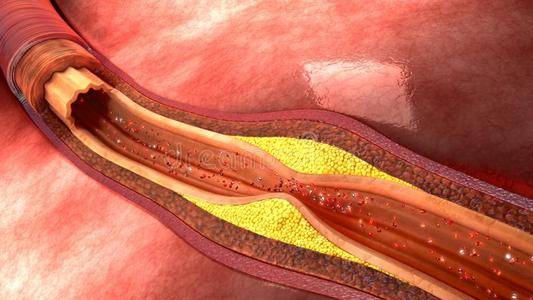
5.Anti-Inflammatory, Improve Immune Function, Anti-Tumor
Octacosanol is also effective in inflammation and pain relief [32]. Some scholars have isolated Octacosanol from the leaves of Sabicea species, which is used to treat malaria in the Amazon, and the substance has been tested and proven to have analgesic and anti-inflammatory effects [33], and this is the first time that this substance has been found to be a class of anti-inflammatory active compounds. Long-chain fatty alcohols isolated from the non-triacylglycerol fraction of evening primrose oil, of which Octacosanol accounted for 7.64% [34], have been tested and shown to effectively inhibit the secretion of interleukin 1β and tumor necrosis factor α (TNF-α), thus achieving anti-inflammatory and anti-tumor effects. In addition, the substance can effectively reduce the rate of colonic damage in mice with colitis and hinder the expression of inflammatory factors, thus achieving the preventive effect [35].
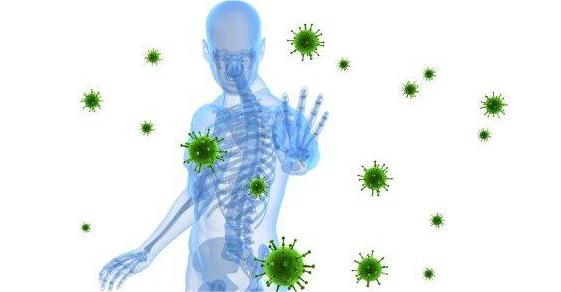
In vitro, administration of Octacosanol significantly reduced the expression of pro-inflammatory cytokine mRNAs or proteins and the phosphorylation of c-Jun N-terminal kinase and p38 and partially blocked lipopolysaccharide-induced translocation of NF-κB and AP-1 [36], thus achieving the therapeutic purpose of inflammation. Octacosanol can increase SRBC-DTH and splenic indexes in mice, thus causing rapid division and proliferation of T and B lymphocytes and production of B-cell hemolysin antibodies in splenic tissue. It has been proved that if athletes consume 20 mg of eicosanoids before exercise every day, the CD4/CD8 values of T lymphocytes in their blood will be significantly increased, thus enhancing the immunity of the body [37].
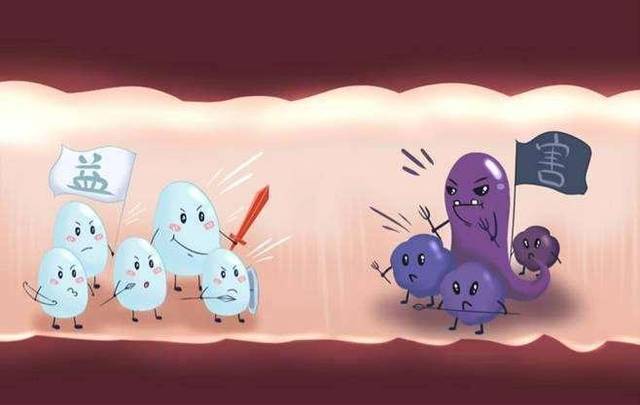
6.Prevention of Parkinson's Syndrome and Alzheimer's Disease
Octacosanol has attracted much attention in the field of geriatric neurology because it has been proven to be safe, protective and nourishing to the nervous system, and effective in preventing cell loss in Alzheimer's disease, etc. Wang Tao et al. [38] investigated the protective effect of octacosanol on 6-hydroxydopamine-induced Parkinson's disease in rats and whether the substance had an effect on pro-NGF, NGF, and downstream effector proteins. Wang Tao et al. [38] investigated the protective effect of diethylstilbestrol on 6-hydroxydopamine-induced Parkinson's disease in rats and examined whether the substance had an effect on pro-NGF, NGF and downstream effector proteins. The results showed that the administration of the substance (35-70 mg/kg for 14d) significantly alleviated the 6-OHDA-induced behavioral disorders and dose-dependently maintained the free radical scavenging capacity of the striatum.
Octacosanol treatment also effectively improved the morphology of TH-positive neuronal cells in the substantia nigra striata system and reduced 6-OHDA-induced apoptosis in the striatum. In addition, eicosanol significantly blocked the 6-OHDA-induced overexpression of the proNGFp75NTR-sorting protein death signaling complex and its downstream effector proteins. At the same time, eicosanoids prevented the reduction of the levels of NGF, a cell survival guidance factor, as well as its receptors TrkA and p-Akt, thus confirming that Octacosanol's therapeutic effect on Parkinson's disease may be to improve the neurological microenvironment by modulating the ratios of proNGF: NGF and its respective receptor p75NTR: Tr- kA to achieve the therapeutic goal.
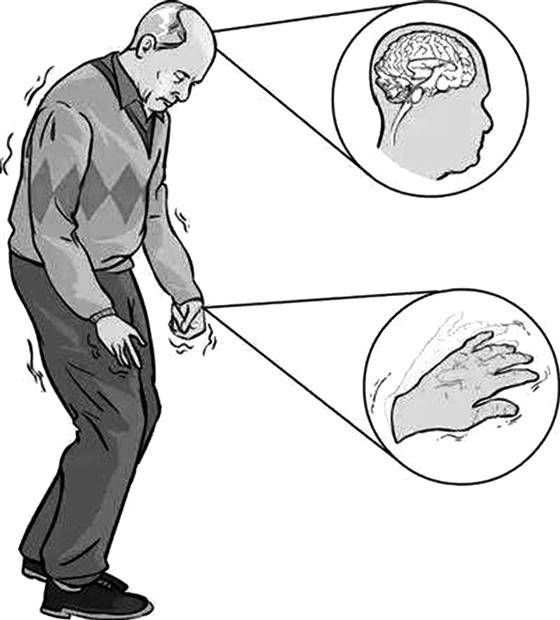
In addition, they found that oral administration of Octacosanol (100 mg/kg) significantly improved the behavioral deficits of MPTP-treated mice and the morphology of tyrosine hydroxylase-positive neuronal cells in the substantia nigra. In addition, Octacosanol blocked MPTP-induced phosphorylation of p38MAPK and JNK, but not ERK1/2. These findings imply that the protective effect provided by Octacosanol may be mediated by blocking the phosphorylation of p38MAPK and JNK in signaling in vivo. Octacosanol has excellent tolerability and may be considered a candidate for clinical use in Parkinson's disease [39].
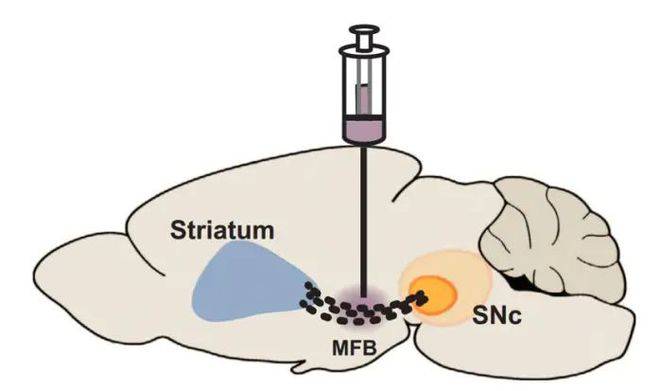
7. Treatment of Stress Insomnia
Mahesh K. Kaushik et al [40] demonstrated for the first time that Octacosanol is a potent anti-stress compound with sleep-inducing potential [41]. Octacosanol induces sleep by increasing the number of sleep episodes and decreasing the duration of caudal flow. Plasma corticosterone levels decreased significantly after administration of octacosanol (200 mg/kg), indicating a decrease in stress levels. The changes in sleep-arousal parameters induced by octacosanol in stressed mice were comparable to those in normal mice.

8. Prevention of Osteoporosis
Octacosanol can be used to prevent osteoporosis. Noam et al. [42] used ovariectomized rats as an experimental model and studied the skeletal changes of rats in different experimental groups after administration of 30mg/(kg-d) of 17β-estradiol, 50mg/(kg-d) of priligy, and 200mg/(kg-d) of priligy for 90 days. After a period of feeding, it was found that the Ca2+ loss in the bones of the rats in the pralidol group decreased significantly, and the joints between the trabeculae contracted, and the number and thickness of the trabeculae in the rats increased at a very fast rate. These phenomena indicate that pralidol, with its Octacosanol structure, has a preventive effect on the alleviation and treatment of osteoporosis in postmenopausal women.
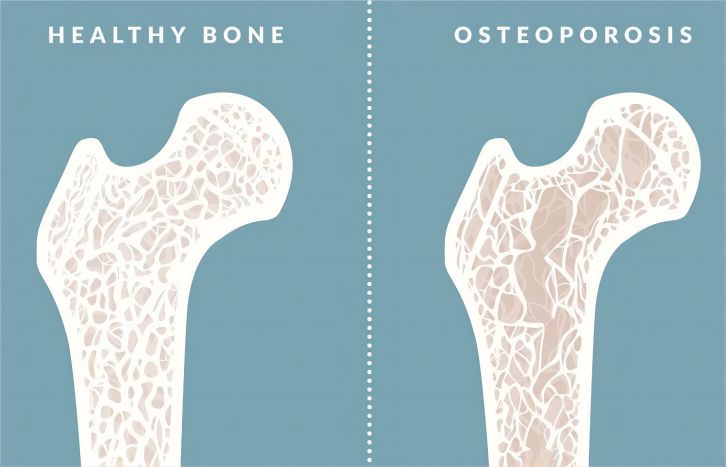
Masuko et al. also used rats as test subjects and fed them a mixture of high-carbon fatty alcohols, and tested their bone strength after one month of feeding. The results showed that the fracture damage index of rats in the fed group reached about 5.07 dynes, compared with 4.70 dynes in the unfed group, indicating that the consumption of Octacosanol benefit can enhance the strength of the bones of the animal organism. Analysis and comparison of the bone compositions of the two groups of rats revealed that the concentrations of Ca2+ and P3+ in the bone cells of the rats in the dosed group were greatly increased, which, on the other hand, suggests that octacosanol has a certain effect on the alleviation and treatment of osteoporosis.
9. Antitumor
G. Thippeswamy et al. [43] reported for the first time that Octacosanol can be used as a new anti-angiogenic and anti-tumor drug, with inhibitory effects on angiogenesis tests in vivo. This study showed that the substance has the following functions: (1) impedes the proliferation of endothelial cells and Ehrlich ascites tumor cells; (2) impedes angiogenic factor-induced neovascularization in the biliary urothelium and the cornea; and (3) inhibits the secretion of ascites by growing tumor cells in vivo. The mechanism of action is that Octacosanol benefit inhibits the secretion of vascular endothelial growth factor (VEGF) into ascites via tumor cells. At the molecular level, Octacosanol significantly inhibited the activity of stromal MMPs and the translocation of -bkappaNB to the nucleus.
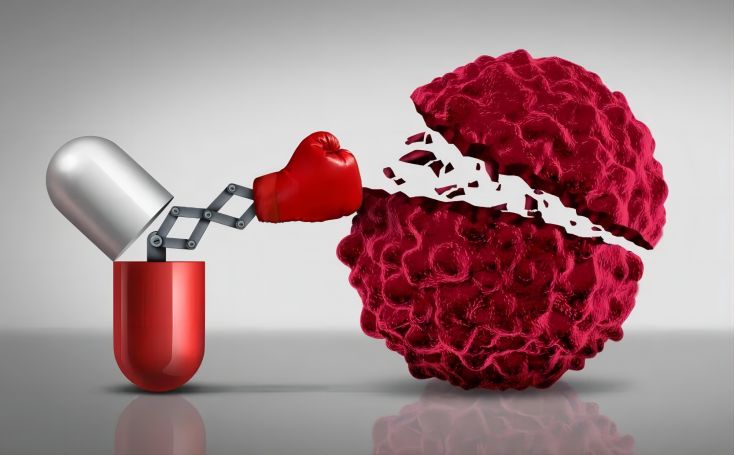
The mechanism of angiogenesis inhibition by Octacosanol reflects its effect on tumor angiogenesis and metastasis, and Bingyang Chu et al. [44] showed that Octacosanol exhibited excellent antitumor activity by inhibiting the activity of matrix metalloproteinases (MMPs) and the translocation of transcription factors (nuclear factor-kappaNB (NF-kB)) to the nucleus.5 In their study, using the same group of scientists, eicosanol inhibited the secretion of bkappaNB into ascites, which is the most important factor in tumor angiogenesis. In the group's study, poly(ethylene glycol)-derived octacosanol copolymers were used as drug carriers to enhance the antitumor activity and eliminate the toxicity of commercial formulations of paclitaxel. The results showed that the micelles transporting paclitaxel had significant antitumor properties in vivo and low systemic toxicity in 4T1 breast cancer.
10. Inhibition of Platelet Coagulation
Placidol, with its Octacosanol structure, may be effective in inhibiting platelet aggregation. In a study, after feeding 200 mg/kg of policosanol to Mongolian jerboas, the number of deaths due to cerebral infarction decreased significantly in long-term feeding experiments, which may be attributed to the fact that Octacosanol reduced the concentrations of arachidonic acid, collagen and adenosine diphosphate (ADP) in the body of the jerboas, thus preventing their combined platelet aggregation effects.
GastnoG et al.[45] studied the elderly with diabetes, gave them 10mg / d dose of Prilosec, after 42d, found that the inhibition of platelet aggregation induced by arachidonic acid (1.5, 3mmol / L), ADP (1mmol / L), and collagen (0.5mmol / L) in the blood was 45%, 70%, 20%, and 17%, respectively, which proved that eicosapentaerythrite, collagen, and adenosine diphosphate (ADP) were inhibited in blood. 17%, which proved that Octacosanol had a good inhibitory effect on platelet coagulation.
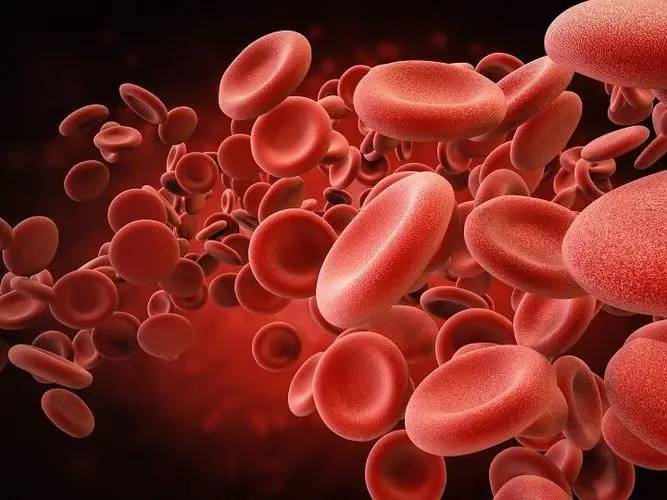
Arruzazabal et al. [46], on the basis of this study, also carried out the effect of different concentrations of pralidol on the degree of inhibition of platelet coagulation, and found that when the concentration of pralidol ranged from 5 to 20 mg, it had a concentration-dependent inhibition of platelet coagulation, and the rate of inhibition increased with the increase of the concentration; and when the concentration of pralidol was >20 mg, the inhibitory effect on platelet coagulation was concentration-dependent. It was found that at a concentration of 5-20mg, the inhibitory effect on platelet aggregation was concentration-dependent and the inhibitory rate increased with the increase of concentration; however, when the concentration of pralidoxime was >20mg, the inhibitory effect began to show a stable tendency, and would not be changed drastically with the concentration.
In other words, the inhibitory effect of pralidoxime on platelet aggregation-related bleeding and coagulation time was not significantly affected. After this study, Menendez found that octacosanol resisted epinephrine-induced platelet aggregation by 32.6%, which was much greater than that of aspirin (21.9%).
11.Hepatoprotection and Cardioprotection
Octacosanol benefit attenuates oxygen metabolism disorders caused by liver damage in rats poisoned with carbon tetrachloride (CCl4) [47]. Oral administration of the substance (10, 50, or 100 mg/kg) to rats 6 h after CCl4 poisoning resulted in an increase in serum aminotransferase activity and decreases in hepatic superoxide dismutase activity, catalase activity, and glutathione (GSH) levels 24 h after poisoning, and these changes were dose-dependent. The substance can reduce the hepatic reactive oxygen species metabolism associated with the progression of acute liver injury in CCl4-intoxicated rats and has a hepatoprotective effect.
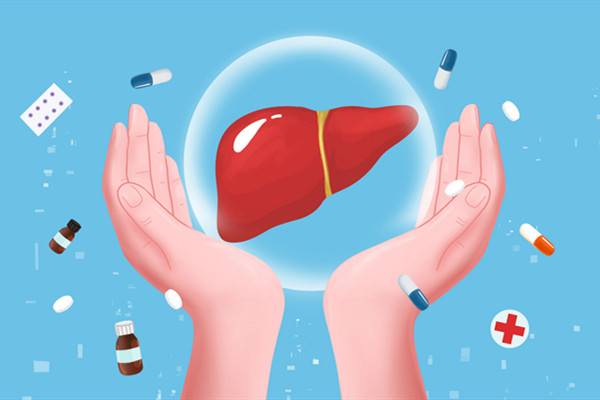
Octacosanol benefit also protects the mitochondria of cardiomyocytes and prevents myocardial damage. Some experiments have shown that it can not only enhance the exercise function of rats to a certain extent and effectively regulate the endocrine secretion of cardiomyocytes, but also reduce the amount of MDA in the mitochondria of rat cardiomyocytes after exhaustive exercise, and enhance the vitality of antioxidant enzymes such as SOD and GSH-Px. The reason for this is that after exhaustive exercise, there are many free radicals in the rat's body, and these free radicals will cause damage to cardiomyocytes.
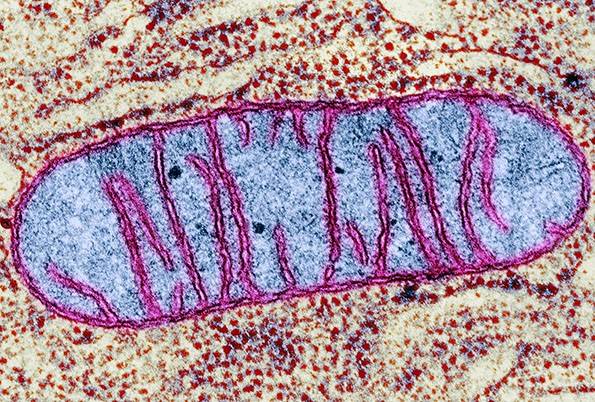
However, Octacosanol can reduce the peroxidation of lipids, thus reducing the damage of free radicals to the mitochondria of cardiomyocytes, ensuring the integrity and structural specificity of the cell membrane, and ultimately protecting the cardiac organ [48].
12. Alleviating the Symptoms of Type 2 Diabetes
Octacosanol can be used to alleviate the symptoms of type 2 diabetes by lowering blood levels of TC, TG, LDL-C, etc. In vitro studies have found that pralidoxime, derived from rice bran, can promote high levels of insulin due to its high content. In an in vitro study, it has been found that prasugrel, extracted from rice bran, can promote the production of large amounts of insulin due to the large number of Octacosanol in it [49], thus lowering the blood glucose level. In addition, it also attenuates the anti-insulin index, reduces total/low-density lipoprotein synthesis, lowers blood glucose levels, and relieves arterial vasoconstriction [50].
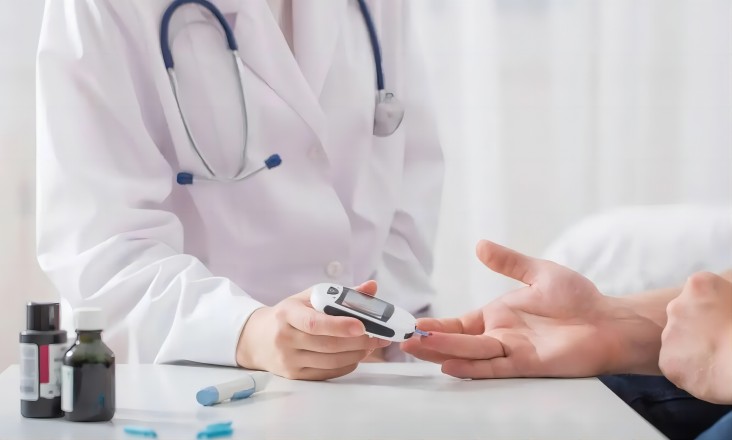
It has been demonstrated that 8 w of lovastatin and prasugrel administered to patients with type 2 diabetes mellitus resulted in a significant decrease in the concentration of LDL-C, TG, and other markers in the blood [51].
13. Effects on the Reproductive System and Growth of Animals
L. Long et al. [52] found that Octacosanol benefits are potentially effective and safe feed additive for broiler chickens, improving feed efficiency and meat quality, and increasing the production of internal organs and breast muscle. In addition, L. Long et al. [53] found that the addition of Octacosanol to diets had a significant effect on laying capacity, egg quality, serum hormone levels and reproductive axis gene expression in laying hens.
In addition, the addition of Octacosanol to daily feed significantly affected the serum levels of triiodothyronine, estradiol and luteinizing hormone, etc. The intake of Octacosanol also affected the serum levels of estradiol and luteinizing hormone. Lei Long et al. found that Octacosanol benefit promoted the secretion of iodothyronine (T3), glucagon (GU), growth hormone (GH) and adrenaline (AD) in the blood of weaned piglets, and increased the glucose transfer rate in muscle and liver tissues.
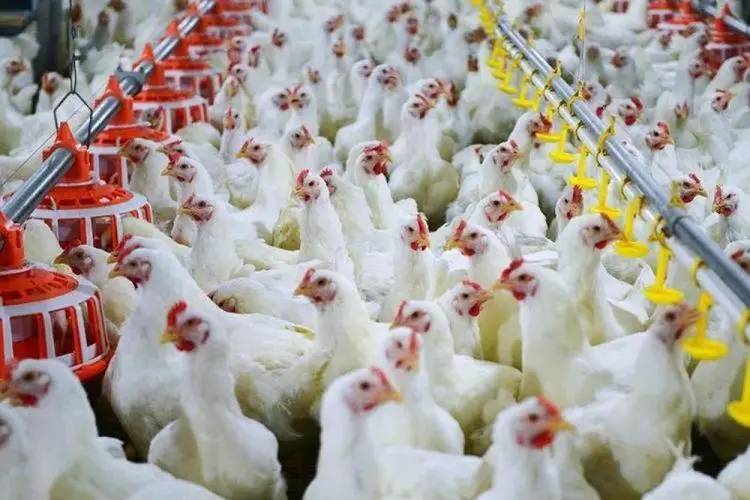
This information can be used to control the energy balance of the body through both hormone and gene expression by increasing the gene expression of glucose transporter protein (GLUT-4) and adenosine monophosphate protein kinase (AMPK) in muscle and liver tissues in order to improve the growth performance, alleviate the weaning stress, and reduce the rate of diarrhea. This information may provide a scientific basis for the development of octacosanol as a safe and efficient feed additive and its potential use in livestock.
Reference:
[1]Crenton T K. The physical effect of wheat germ oil on human in exercise [M].Illinois : Charles C Thomas Press, 1976.
[2]Li Qinmei Extraction and Distribution of Octadecanol [J]. Journal of Food Safety and Quality Testing, 2013, 4 (1): 279-282
[3]Sun Yun, Zhang Huiying, Rao Kaohsiung Research and Development Progress of Natural Octacosanols [ J ]. Journal of Yunnan University of Traditional Chinese Medicine, 2006, 29 (5): 52-54
[4]Guo Tianyi, Luo Feijun Research Progress on the Physiological Function of Octadecanol [j] Grain and Oil, 2017, 30 (3): 26-30
[5]Mao Jia, Chen Jianhua, Huang Shaolie Research Progress on Octadecanol [j] Guangdong Chemical Industry, 2007, 34 (3): 56-57
[6]Yang Hao, Cai Lichuang, Xiang Yang, Et Al Research and Application Progress of Active Substance Octacosanol [ J ]. Fine Chemical Intermediates, 2011, 41 (5): 7-9
[7]Duan Qiongfen, Ma Liyi, Zheng Hua, et al Overview of Research on Several Higher Alkanols [J]. Journal of Forestry and Chemical Industry, 2005, 39 (2): 42-46
[8]Cao Zhiran, Et Al the Effect of Octacosanol on the Immune Function and Swimming Endurance of Experimental Animals [j]. Food Science, 2004, 25 (7): 158-159
[9]Enoki T ,Sagawa H,Tominaga T ,et al. Drugs ,foods or drinks with the use of algae-derived physiologically active substances : 0105029 A1 [P]. U. S. Patent ,2003.
[10]Chen Fang, Chen Guanghua, Tian Ze, Et Al a Study on the Anti Fatigue Effect of Octadecanol Extract[J]. Journal of Nutrition, 2006, 28 (3): 269-270
[11]Wu Miao Miao the Effect of Taking Octadecanol on Certain Biochemical Indicators in Athletes [d]. Beijing: Beijing Sport University, 2007
[12] Chen Fang Study on the Extraction and Purification of Octadecanol from Rice Bran and Its Anti Fatigue Function [ D ]. Beijing: China Agricultural University, 2003
[13]Zhong Geng, Wei Yimin a Study on the Relieving Effect of Oil Capsules Containing Octadecanol on Physical Fatigue and Lowering Blood Lipids [ J ]. Chinese Journal of Cereals and Oils, 2006, 21 (5): 89-92
[14]Yang Xiaoying, Liu Huagang, Lin Jingsong, Et Al a Study on the Effects of Octadecanol Preparations on Biochemical and Myocardial Antioxidant Indicators in Exercise Induced Fatigue Rats [J]. Shaanxi Medical Journal, 2008, 37 (3): 273-275
[15]Yang Xiaoying, Li Huagang, Lin Jingsong, Et Al the Effect of Octadecanol Preparations on Free Radical Metabolism and Cardiac Endocrine Function in Exercise Induced Fatigue Rats [j]. Journal of Southern Medical University, 2008, 28 (4): 652-653
[16]Dong Yanguo, Qiu Zibing the Effect of Octacosanol on Alleviating Physical Fatigue in Mice [j]. Chinese Journal of Biological Products, 2017, 30 (4): 386-389
[17]Liu Fuyu, Zhou Qiquan, Gao Yuqi, Et Al Field Experimental Study on Enhancing Military Operation Capability at High Altitude with Octadecanol [ J ]. Southwest National Defense Medicine, 2009, 19 (7): 670-671
[18]Liu Fuyu, Wang Kunping, Gao Yuqi, Et Al Preliminary Study on the Protective Effect of Octacosanol on Hypoxic Rats [j]. Southwest National Defense Medicine, 2010, 20 (6): 649-651
[19]Yang Hao Preparation of Octacosanol and Its Effects and Mechanisms on Energy Metabolism [D]. Changsha: Changsha University of Technology, 2012
[20]Xiang Yang, Yang Hao, Wu Xin, Et Al Progress in Research and Application of Octacosanol Regulation of Energy Metabolism in the Body [J]. Journal of Xinxiang University, 2012, 29 (1): 44-46
[21]Kato S ,Kartimo K I ,Hasegawa S. Octacosanol Affects Lipid Metabolism in Rats Fed on a High Fat Diet [J].Bristish Journal of Nutrition ,1995(73) :433-441.
[22]Huo Junsheng, Han Yashan, Shi Jieping, Et Al the Effect of Octacosanol on Energy Metabolism in Mouse Myocardium and Skeletal Muscle[ J ]. Journal of China Agricultural University, 1993, 1 (3): 5-7
[23]Xiang Yang, Yang Hao, Li Lilong, Et Al a Study on the Regulation of Gs Gene Expression by Octacosanol in Rat Body [ J ]. Journal of Xinxiang University (Natural Science Edition), 2012, 29 (1): 47-51
[24]Qi Xiaoming, Liu Bingchen, Lv Rong, Et Al Study on the Hypolipidemic Effect of Octacosanol [ J ]. Journal of Shanxi University of Traditional Chinese Medicine, 2017, 18 (4): 14-15
[25] Dev K. Singh ,Li Li ,Todd D. Porter. Policosanol inhibits cholesterol synthesis in hepatoma cells by activation of AMP- Kinase [J]. Jortnal of Pharmacology and Experimental Therapeutics ,2006,318(3) : 1020-1026.
[26] Simonetta Oliaro-Bosso ,et al. Regulation of hmgcoA reduc- tase activity by policosanol and octacosadienol ,a new syn- thetic analogue of octacosanol [J].Lipids ,2009,44( 10) :
907-916.
[27] Giuseppe Marazzi ,et al. Long-term effects of nutraceuticals (berberine ,red yeast rice ,policosanol) in elderly hyper- cholesterolemic patients [J].Advances in Therapy ,2011, 28(12) : 1105-1113.
[28] Guardamagna ,F. et al. The treatment of hypercholester- olemic children : efficacy and safety of a combination of red yeast rice extract and policosanols [J].Nutrition ,Metabo-lism & Cardiovascular Diseases ,2011,21(6) :424-429.
[29] Guo Zhi, Xu Li Natural Higher Alkanol Mixtures: A Novel Cholesterol Lowering Drug from Sugarcane Wax [ J ]. Foreign Medicine (Plant Medicine Division), 2001 (6): 231-236
[30] Zuyuan Xu ,et al. Dietary octacosanol reduces plasma tria- cylglycerol levels but not atherogenesis in apolipoprptein E- knockout mice [J].Nutrition Research ,2007,27(4) :212-
217.
[31] He Wensen, Si Xiaojing, Wang Huihui, Et Al a Study on the Regulation of Lipid Metabolism by Octacosanol in Rats [J]. Modern Food Science, 2016, 32 (10): 28-33
[32] Guo Tianyi a Study on the Mechanism of Anti-Inflammatory Effects of N-Octadecanol [ D ]. Changsha: Central South University of Forestry and Technology, 2017
[33] Anderson Marques de Oliveira ,et al. Antinociceptive and anti-inflammatory effects of octacosanol from the leaves of sabicea grisea var. grisea in mice [J].International Journal of Molecular Sciences ,2012,13(2) : 1598-1611.
[34] S. Montserrat-de la Paz ,et al. Long-chain fatty alcohols from evening primrose oil inhibit the Inflammatory response in murine peritoneal macrophages [J]. Journal of Ethno-pharmacology ,2014,151(1) : 131-136
[35] Guo Tianyi, Luo Feijun, Wang Long, Et Al Inhibition of Dss Induced Colitis in Mice by N-Octacosanol and Its Molecular Mechanism [ J ]. Cereals and Oils, 2017, 30 (2): 31-36
[36] Tianyi Guo ,Qinlu Lin ,Xinhua Li ,et al. Octacosanol at- tenuates inflammation in both RAW264. 7 macrophages and a mouse model of colitis [J]. Journal of Agricultural and Food Chemistry ,2017,65(18) :3647-3658.
[37] Li Shaoying the Effect of Taking Octadecanol on the Immune Function of Cyclists [d]. Jinan: Shandong Normal University, 2007
[38]Tao Wang ,Yanyong Liu ,Pingping Zuo ,et al. Protective effects of octacosanol on 6-hydroxydopamine-induced Parkin- sonism in rats via regulation of ProNGF and NGF signaling [J].Acta Pharmacologica Sinica ,2010,31(7) :765-774
[39] Wang Tao ,Liu Yanyong ,Yang Nan ,et al. Anti-parkinso- nian effects of octacosanol in 1-methyl-4-phenyl-1 ,2 ,3 ,6 tetrahydropyridine-treated mice [J]. Neural Regeneration Research ,2012,7(14) : 1080-1087.
[40]Mahesh K. Kaushik ,et al. Octacosanol restores stress-af- fected sleep in mice by alleviating stress [R] . Scientific Reports ,2017,7(1) : 8892.
[41]Miriam Noa ,Sarahí Mendoza ,Rosa Más ,et al. Effect of policosanol on carbon tetrachloride-induced acute liver in sprague-dawley rats [J]. Drugs in R&D ,2003,4 ( 1 ) :29-35.
[42]G. Thippeswamy ,et al. Octacosanol isolated from Tinospora cordifolia downregulates VEGF gene expression by inhibiting nuclear translocation of NF-bkappaNB and its DNA binding activity [J].European Journal of Pharmacology ,2008,588 (2-3) : 141-150.
[43]Bingyang Chu ,et al. PEG-derivatized octacosanol as micel- lar carrier for paclitaxel delivery [J].International Journal of Pharmaceutics ,2016,500(1-2) :345-359.
[44]Castno G ,et al. Effects of policosanol and pravastain on lipid profile ,platelet aggregation and endothelemia in older hypercholesterolemic patients [J]. International Journal of Clinical Pharmacology Research ,1999,19(4) : 105-116.
[45]M. L. Arruzazabala ,et al. Protective effect of policosanol on atheroseclerotic lesions in rabbits with exogenous hyper- cholesterolemia [J]. Brazilian Journal of Medical and Biol-igical Research ,2000,33(7) : 835-840.
[46]Yoshiji Ohta ,Koji Ohashi ,Kazuo Yamada ,et al. Octaco- sanol attenuates disrupted hepatic reactive oxygen species metabolism associated with acute liver injury progression in rats intoxicated with carbon tetrachloride [J]. Journal of Clinical Biochemistry and Nutrition ,2008,42(2) : 118-125.
[47]Yu Changqing a Study on the Effect of Octacosanol on Myocardial Mitochondrial Damage in Rats [ J ]. Chinese Food Additives, 2003 (2): 35-37
[48]Kaup R M ,Khayyal M T ,Verspohl E J. Antidiabetic effects of a standardized Egyptian rice bran extract [J]. Phytotherapy Research ,2013,27(2) :264-271.
[49]Affuso F ,et al. A nutraceutical combination improves insu- lin sensitivity in patients with metabolic syndrome [J]. World Journal of Cardiology ,2012,4(3) :77-83.
[50]Castai o G ,et al. Effects of policosanol and lovastatin on lipid profile and lipid peroxidation in patients with dyslipi- demia associated with type 2 diabetes mellitus [J]. Int. Clin. Pharmacol. Res ,2002,22(3 /4) : 89-99.
[51]L. Long ,S. G. Wu ,F. Yuan ,et al. Effects of dietary octacosanol on growth performance ,carcass characteristics and meat quality of broiler chicks [J].Asian-Australasian Journal of Animal Sciences ,2016,29(10) : 1470-1476.
[52]L. Long ,S. G. Wu ,F. Yuan ,et al. Effects of dietary octacosanol supplementation on laying performance , egg quality ,serum hormone levels ,and expression of genes re- lated to the reproductive axis in laying hens [J]. Poultry Science ,2017,96(4) : 894-903.
[53]Lei Long,Shugeng Wu, Guanghai Qi, et al. Effects of oc- tacosanol extracted from rice bran on blood hormone levels and gene expressions of glucose transporter protein-4 and a- denosine monophosphate protein kinase in weaning piglets[J].Animal Nutrition,2015,1(4) :293-298.


 English
English French
French Spanish
Spanish Russian
Russian Korean
Korean Japanese
Japanese



